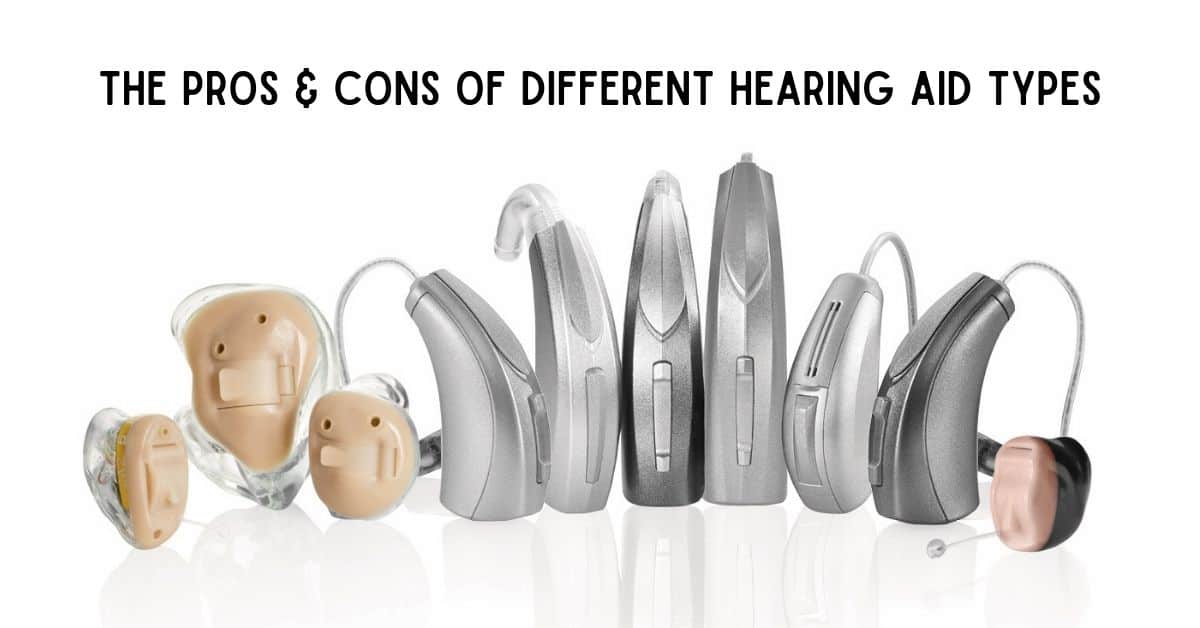
Congratulations on taking the step toward hearing loss treatment! After you have taken a hearing test, you have entered the world of filling in the gaps in your hearing. Although you have taken the most important step, you are now faced with navigating the world of hearing aids, and the ever-growing number of options can seem daunting.
The good news is that we are here to advise you on the right type of aids for your individual lifestyle and hearing profile. After the results of your test come back and you have a consultation about the features that will be helpful to you, your provider will most likely present you with a few options to choose from.
Although their expertise is the most reliable source for help making this decision, you might also want to do some background research of your own to get a sense of what is possible. The following are some of the types of hearing aids out there, as well as the pros and cons of each style. Consider how these features map onto your own needs and desires in a set of hearing aids to make the right choice for your individual situation.
Type of Hearing Aids
One of the classic types of hearing aids is the Behind-The-Ear (BTE) model. The large size of these aids makes them good for people with arthritis or dexterity issues. They tend to last a long time and to be durable. On the other hand, the conspicuous look can be unappealing to some people, and they can be awkward to use on the phone.
A similar style is the Mini Behind-The-Ear (Mini BTE) aid. These also connect a receiver that hooks behind the ear to a unit in the outer ear, but they use more of an earbud than a custom earmold. One benefit of the Mini BTE is the acoustic space, making a more natural sound for one’s own voice and avoiding the “plugged up” feeling of some other aids. These devices can also be difficult to use on the phone.
The Receiver-In-Canal (RIC) hearing aid style places the receiver in the ear and the rest of the components behind the ear, and many people appreciate the fact they are less noticeable. These can sync with other devices, including the Apple line of products, so they may be of interest for Bluetooth connectivity. On the other hand, some people find these frustrating to use with the phone, as well.
Other hearing aids place all components in the ear rather than extending via a tube to another unit. These can fit into the ear to varying degrees. The In-The-Ear (ITE) models have a custom molded unit that sits in the outer ear, similar to the BTE style. These can be very obvious and bulky, but they do a good job with sound quality and telephone use. These units are also very good for those with arthritis or manual dexterity problems.
Smaller units include In-The-Canal (ITC) hearing aids that use a custom-molded device that goes deeper into the ear and is barely noticeable. The major drawback of ITC hearing aids is that they are prone to feedback.
Completely-In-the-Canal (CIC) and Invisible-In-the-Canal (IIC) hearing aids are progressively smaller and can fit more deeply inside the ear canal. These units are not visible to the naked eye in most cases, but the small size can make them difficult to manipulate, insert, remove, or change batteries. The battery is so small in IIC hearing aids that the batteries tend to have shorter life.
Trust the Experts
If this information seems like a lot to digest, don’t fret. Our team is here for you with the guidance and advice you need to make the right decision. Be sure to describe any of your individual needs in your consultation. If you have arthritis or other dexterity issues, be sure to mention that. If you are concerned with the appearance of your hearing aids, let us know at your initial meeting. With this information, as well as knowledge of your budget, we will help you arrive at the right choice!
